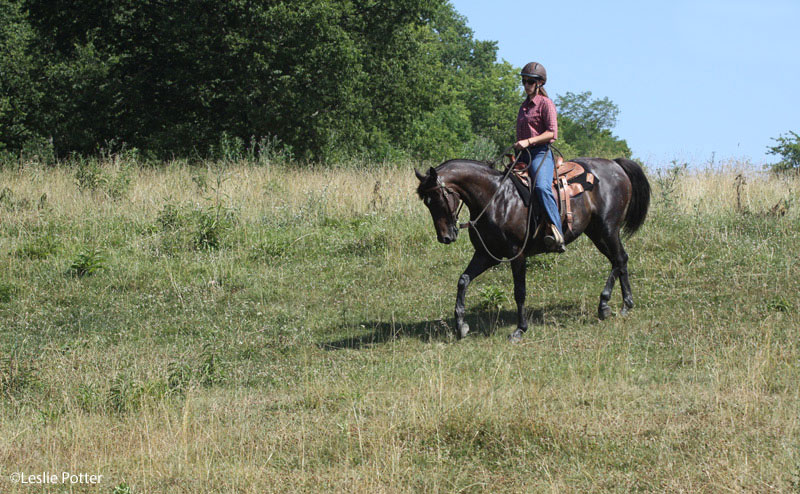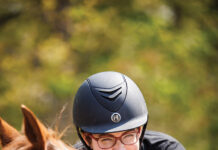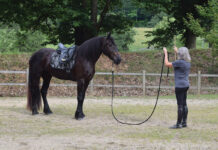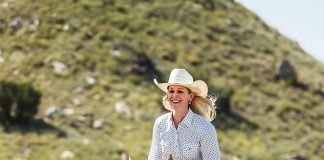For all equestrians, the strength of our core is very important. Read on to learn more about how a horse rider can work on getting a stronger core. Below there are also some core exercises that are easy to follow along and practice on your own.

Being a trail rider is fun, with trails providing new views and experiences. Taking your horse out of the arena can also really help build a confident and trusting partnership between horse and rider. The romantic picture of cantering off into the sunset is an ideal most of us have had since seeing our first western movie.
The reality of trail riding, however, involves ups and downs, rocks and mud, annoying bugs, the odd unexpected creature popping out of the woods, and uneven footing sure to cause the occasional stumble from even the most experienced trail horse.
The Importance of Balance
To stay on top of things (in a very literal sense), it helps to be in shape enough to easily rebalance and center yourself as your horse regains his own balance. Staying in balance is really more about getting back in balance quickly.
I remember watching women’s gymnastics on television one evening. The gymnast was on the balance beam and took a misstep, visibly losing her balance. She promptly centered herself on the beam, and the announcer simply said, “Balance check.”
No medal was won on that routine, but it left a clear impression in my mind of how dynamic keeping your balance can be. It’s not just about staying in perfect balance, but about the ability to come back into balance, often even before anyone notices you’ve lost it.
To help develop a secure seat and balance for an unpredictable situation, a simple group of exercises that adds core fitness and challenges your balance will help you find that centered feeling for quick recoveries.
To start, pick your favorite active warm up exercise to get your muscles moving. Once your muscles are warm, rotate through the following core exercises.
1. Core Exercise #1: Single-Leg Dead Lift: Start standing squarely with your feet hip-width apart. While rotating forward at the hips, lift one leg straight behind you and tip forward until your chest is parallel to the ground with your fingertips reaching toward the floor. Keep a soft bend in the knee of your weight-bearing leg. Return to standing position. Keep control and balance with your core engaged. Work up to 10 times on each leg.
2. Core Exercise #2: Single-Leg Upright Row: Standing with your feet shoulder-width apart and your knees slightly bent, lean forward at the hips, lifting one leg straight behind you. Bring your opposite arm up by your side, bending your elbow as if you are lifting a weight. Let your arm drop while keeping your body and leg position steady. Repeat 10 times. Then perform on the opposite side. You can rest your back foot lightly on the ground for easier balance if needed.
3. Core Exercise #3: Lunge Rotation: From a standing position, step backward into a lunge with one leg while bending the opposite leg at the knee. Maintain good posture with your shoulders back and eyes up. Step forward and repeat on the opposite leg for a total of 10 repetitions on each leg.
4. Core Exercise #4: Ice Skaters: From a standing position with your knees bent, lean forward, bending at the waist with your upper body at a 45-degree angle. With elbows bent and arms at your sides, take small jumps from side to side, allowing your non-weight-bearing leg to come behind your weight-bearing leg. Swing your arms as you do so, just as if you were ice skating. This is a dynamic exercise. Take a quick look at a video of speed skating to really get the feel for the exercise. Repeat 10 times.
5. Core Exercise #5: Back Lunges with High-Knee Step Through: Perform the lunge again, this time bringing your back leg forward after you lunge, lifting your bent knee in front of you at waist height in this dynamic stretch. Repeat 10 times on each leg. For the maximum challenge to your balance, go directly from the back lunge to the high knee position without touching your moving leg to the ground between the two positions.
For all the exercises, start with fewer repetitions and build up as your strength and balance improve. Be sure to engage your core and stay centered to regain your balance easily. Use your “shoulders back with eyes up” position, just as if you were riding.
If these exercises are too difficult, begin with a smaller range of motion to start and build up to the full range of motion over time. Take your time with each movement.
Debbie Rodriguez is an International Sports Sciences Association certified personal fitness coach, Grand Prix dressage rider and USDF gold medalist, USEF ‘S’ dressage judge, ‘R’ eventing judge, and creator of Success in the Saddle rider fitness DVDs (www.successinthesaddle.com). Natalie DeFee Mendik is an award-winning journalist specializing in equine media. Visit her online at www.mendikmedia.com.
This article about horse riders working on a stronger core originally appeared in the November 2019 issue of Horse Illustrated magazine. Click here to subscribe!





